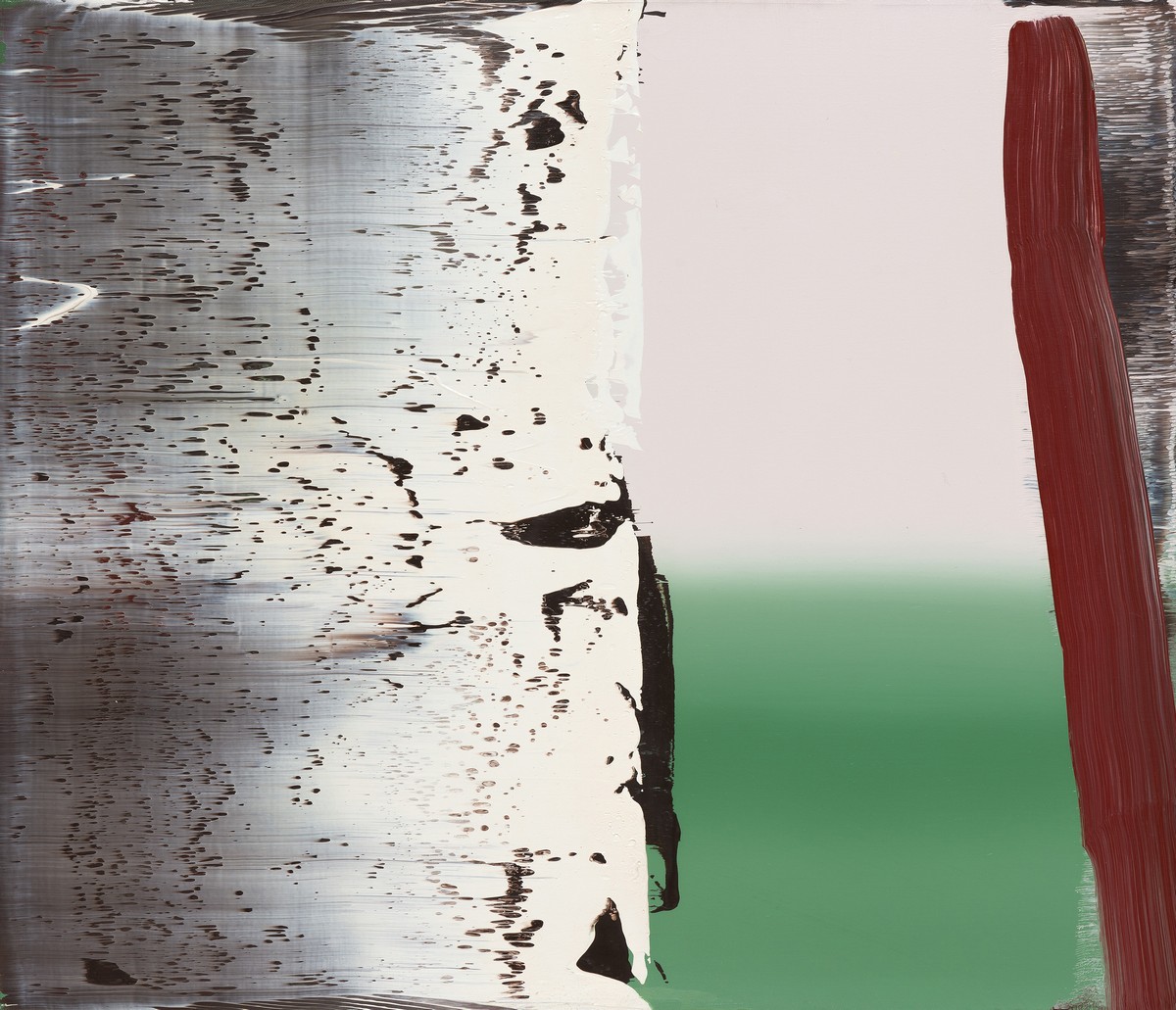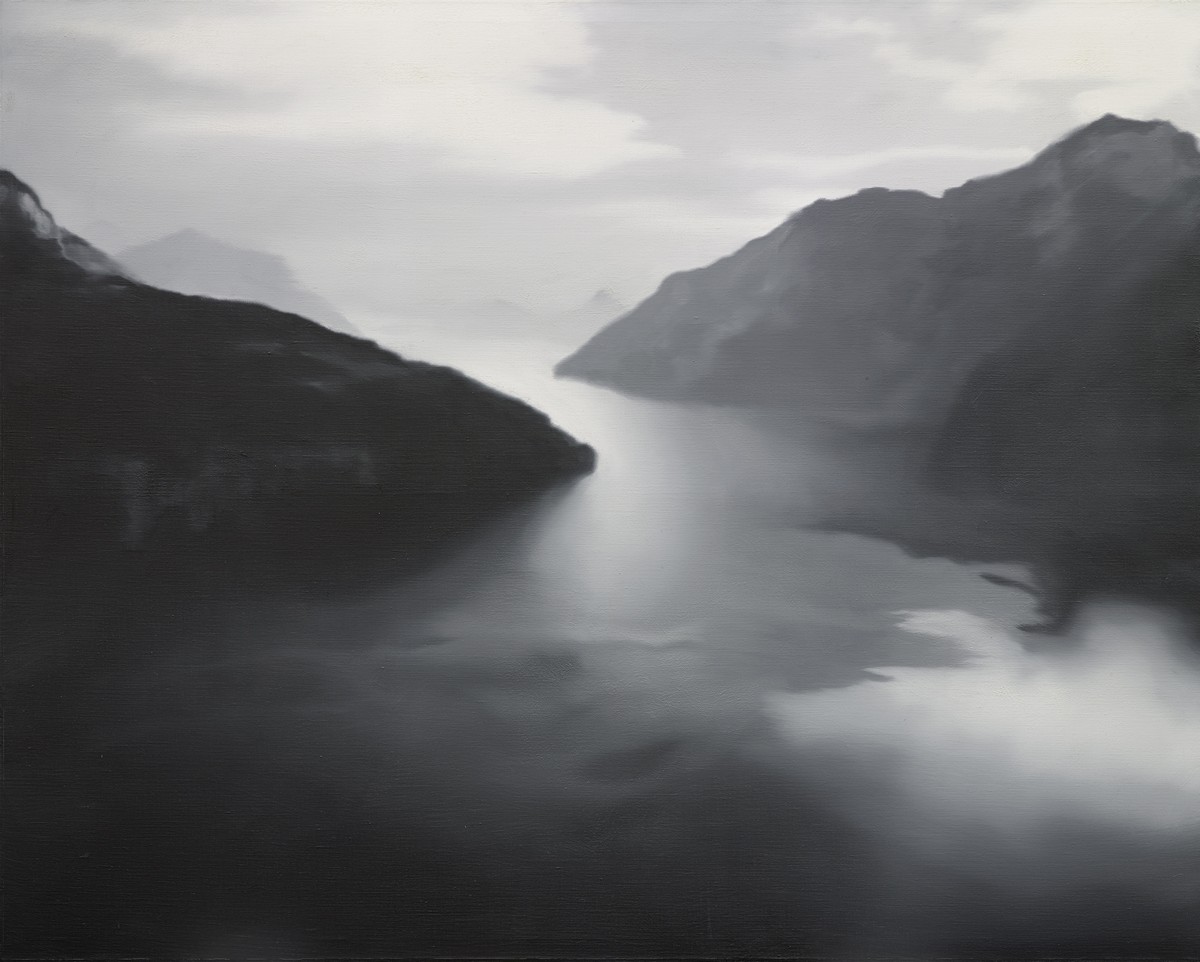ART CITIES:Zurich-Gerhard Richter
 No genre has fascinated Gerhard Richter so consistently throughout his career as that of landscape. Ever since 1968-69, the artist has revisited and reprised its possibilities, creating black-and-white townscapes based on newspaper picture and amateur photographs, mountain and park scenes with heavy impasto, illusionistic seascapes in subtly gradated tones and paintings worked with abstract overpainting. Frequently these paintings interrupt or quietly sabotage the transcendent horizon of the Romantic landscape, but the image presented is not exactly ironized as in other paintings of Richter’s.
No genre has fascinated Gerhard Richter so consistently throughout his career as that of landscape. Ever since 1968-69, the artist has revisited and reprised its possibilities, creating black-and-white townscapes based on newspaper picture and amateur photographs, mountain and park scenes with heavy impasto, illusionistic seascapes in subtly gradated tones and paintings worked with abstract overpainting. Frequently these paintings interrupt or quietly sabotage the transcendent horizon of the Romantic landscape, but the image presented is not exactly ironized as in other paintings of Richter’s.
By Dimitris Lempesis
Photo: Kunsthaus Zürich Archive
Comprising some 140 works, the exhibition “Gerhard Richter. Landscape” guides visitors through Richter’s creative process from 1957 to 2018 and covers all the media Richter has used to create his landscapes, from painting, drawing, printmaking and photography to sculptures and artist’s books. Comprising some 140 works, most of which are being shown for the first time in Switzerland or have not been seen in public for decades; they include “Townscape PX” (1968), “Seascapes” from Berlin and Bilbao, and the “Jungle Picture” (1971) from a Private Collection. In addition to 80 paintings, there are drawings, photo collages, overpainted photographs, prints and artist’s books. From the outset, Richter views the landscape through a medium of mechanical reproduction: photography. The photos that form the basis for his pictures are mostly ones that he has taken himself, and he uses them to create not painted landscapes, but paintings of photographed landscapes. The specifically photographic aesthetic that informs the composition, structure and color palette remains clearly visible, as in the oil painting “House in Forestí” (2004). Thus begins his critical reflection on the lost potential of painting. In the 1960s and 1970s especially, Richter produced highly abstract images of mountains, parks and cities that, through painting, further explore the potential of an abstraction that has its origins in photography. These works alternate between landscape motifs depicted as reproductions of originals and a self-referential materiality of color expressed through broad brushstrokes. This dualistic principle does not aim at a classical abstraction in which the form becomes autonomous, but rather asks to what extent the form can achieve autonomy from a basis in photographs. The two-part work “St. Gallen” (1989) pushes abstraction so far that even locals are unable to recognize any topographic or architectural features of their city. In the 1970s and 1990s, Richter also produced landscapes in the form of fictional constructions. Working in oil painting, printing, photo collages and three-dimensionality, he creates landscapes and monumental spaces that can never exist in reality but are highly suggestive. The motifs of seas, mountains and clouds have been put together in such a way that their size or arrangement transcends any real experience. From 1965 onwards, Richter produces non-representational overpaintings using oils, employing a wide range of often strongly corporeal techniques including peeling, scraping, smearing and squeegeeing. The photograph of a landscape conveys a representational motif by means of reproduction, while at the same time paint is applied to the surface in such a way as to produce abstraction. These two levels of reality – including titles devoid of locational information such as “10. Apr. 2015” (2015) – appear as an interlocked unity, forging a bond that is close and replete with tension, yet at the same time subtle.
Photo: Gerhard Richter, Abstract Landscape, 1969, Oil on canvas, 30 × 40 cm, Private collection Munich
Info: Curators: Hubertus Butin and Cathérine Hug, Kunsthaus Zürich, Heimplatz 1, Zurich, Duration: 23/3-25/7/2021, Days & Hours: Tue & Fri-Sun 10:00-18:00, Wed-Thu 10:00-20:00, www.kunsthaus.ch






